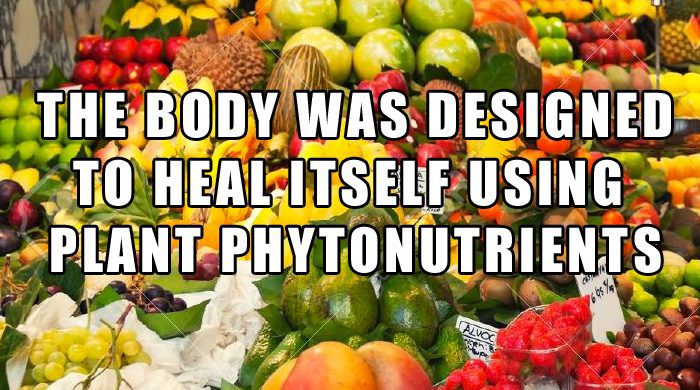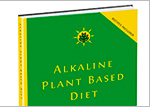The Body Was Designed To Heal Itself With The Use Of Plant Phytonutrients

The body is an amazing machine whose DNA was programmed to heal the body, and it uses various mechanisms to do so. The body has internal mechanisms, like the use of specific proteins, that will repair damaged cells or destroy old cells or cells that are too badly damaged.
This ability was born out of an incredible intelligent order that permeates life. The body also uses external substances to heal itself. Phytonutrients, which are derived from plants, are external compounds the body uses to protect itself against disease and to clean and repair cells.
The body uses vitamins and minerals to support the metabolism of cells and they are essential for sustaining life. Phytonutrients, or plant chemicals such as carotenoids and flavonoids, are not essential for keeping you alive but they sure do help keep you healthy.
Plants use these chemicals to protect themselves from bugs, germs, fungi, and other environmental threats. When we consume these phytonutrients they also protect the body. The amazing thing is just because you consume something doesn’t mean the body will be able to use it.
Cell Receptors and Plant Phytonutrients
We often take for granted the complexity and awesomeness of the human design, and therefore we often don’t take into consideration how we were designed to interact with natural plant life to best support the health of our temples, our bodies.

Cells have receptors that only let in specific compounds, and different cells have different receptors for different phytonutrients. The diagram is a representation of the ligand phytonutrient that has a specific composition or shape. The cell has receptors that detect the ligand molecule and allows it to enter the cell, while keeping other compounds out of the cell. This is a very specific and intelligent design.
Phytonutrients bind to specific receptors in the body, which is why it is good to eat a well balanced plant-based diet to saturate the body with a wide variety of phytonutrients. Not only do cells have specific receptors, cells within different areas of the same organ appear to be programmed for different phytonutrients.
Cruciferous vegetable consumption, like kale, is associated with lower colon cancer risk in the middle and right side of the colon, while yellow vegetable consumption, like yellow squash, is associated with lower colon cancer risk further down on the left side of the colon.[1]
Take a look at the video for further explanation.
[1] N Annema, J S Heyworth, S A McNaughton, B Lacopetta, L Fritschi. Fruit and vegetable consumption and the risk of proximal colon, distal colon, and rectal cancers in a case-control study in Western Australia. J Am Diet Assoc. 2011 Oct;111(10):1479-90.






